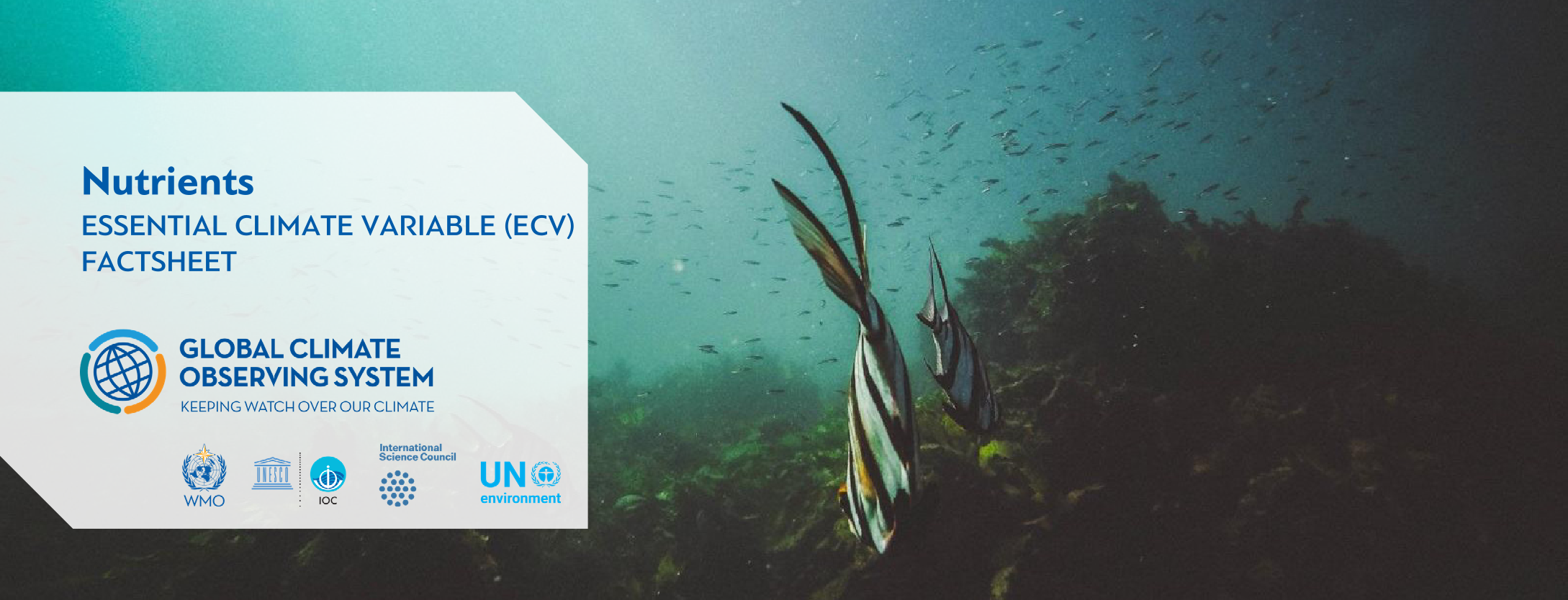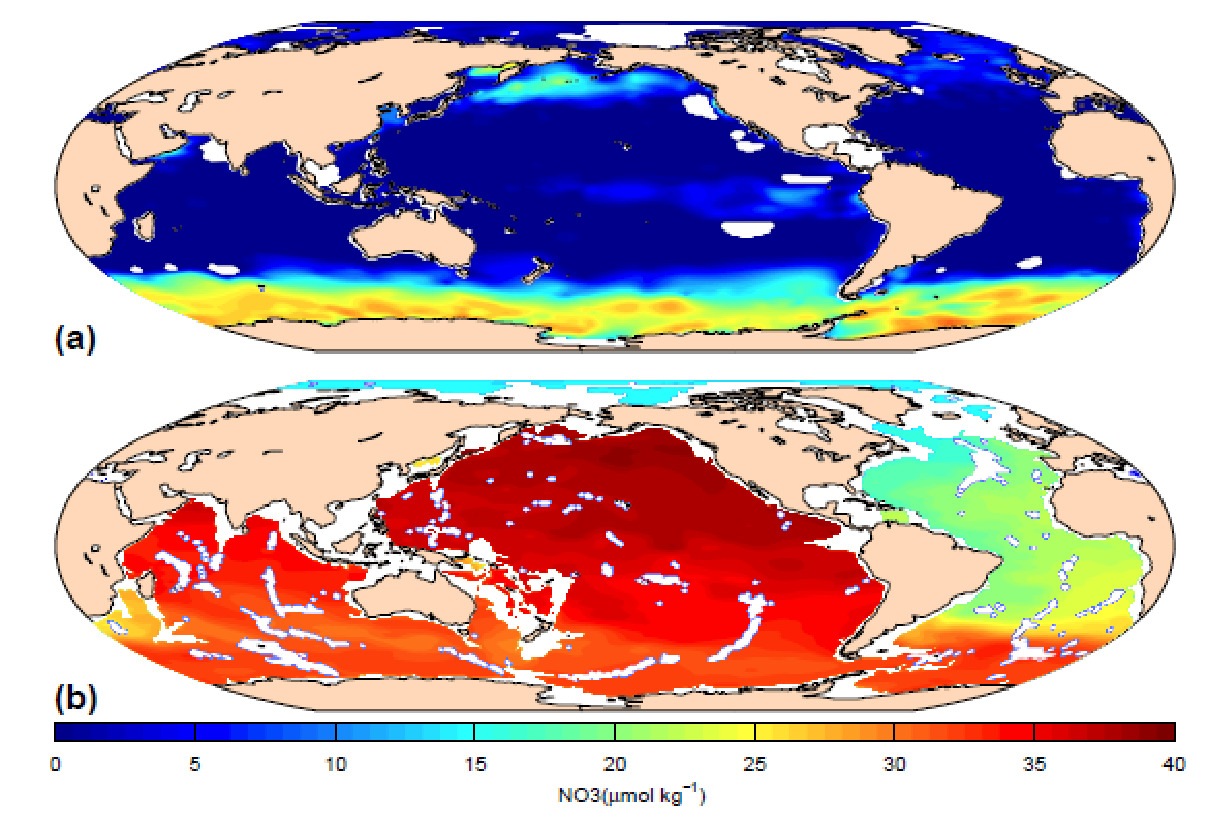
Nutrients
 |
Nutrients are essential for ocean life. Nutrient data provide important biogeochemical information, and provide essential links between physical climate variability and ecosystem variability. They can provide additional information on ocean mixing and climate related phenomena such as changes in primary and export production (nutrient transports regulate new production which is correlated with export production), eutrophication and shifts in phytoplankton community composition. Therefore it is necessary to develop accurate observations of trends in dissolved nutrients in both upper- and deep-ocean waters. | |
| Domain: | Ocean | |
| Subdomain: | Biogeochemical | |
| Scientific Area: | Biosphere | |
| ECV Steward: | ||
| Products: | Silicate, Phosphate, Nitrate | |
Nutrients in the ocean
|
Figure: Global Nitrate concentration [μmol kg-1] distributions at (a) 10 m and (b) 3000 m. Reference: Lauset, S. K., Key, R. M., Olsen, A. R., van Heuven, S. et al. (2016): A new global interior ocean mapped climatology: the 1° x 1° GLODAP version 2, Earth System Science Data, 8, 325-340, www.earth-syst-sci-data.net/8/325/2016/doi:10.5194/essd-8-325-2016. |
ECV Products and Requirements
These products and requirements reflect the Implementation Plan 2022 (GCOS-244).
The requirements are found in the complete 2022 ECVs Requirements document as well: ECV Nutrients.
| Products | Silicate | Phosphate | Nitrate | |||||
| Coastal | Coastal | Coastal | ||||||
| (*) | Unit | Values | Values | Values | ||||
| Horizontal Resolution | G | km | 1000 | 0.1-100 | 1000 | 0.1-100 | 1000 | 0.1-100 |
| B | ||||||||
| T | 2000 | 100 | 2000 | 100 | 2000 | 100 | ||
| Vertical Resolution | G | |||||||
| B | ||||||||
| T | ||||||||
| Temporal Resolution | G | month | 3 | 3 | 3 | |||
| B | 1 | 1 | 1 | |||||
| T | decadal | decadal | decadal | |||||
| Timeliness | G | month | 6 | 6 | 6 | |||
| B | ||||||||
| T | 12 | 12 | 12 | |||||
| Required Measurement Uncertainty (2-sigma) | G | % | 1 | 1 | 1 | |||
| B | ||||||||
| T | 3 | 3 | 3 | |||||
| Stability | G | |||||||
| B | ||||||||
| T | ||||||||
(*) Goal (G): an ideal requirement above which further improvements are not necessary. Breakthrough (B): an intermediate level between threshold and goal which, if achieved, would result in a significant improvement for the targeted application. The breakthrough value may also indicate the level at which specified uses within climate monitoring become possible. It may be appropriate to have different breakthrough values for different uses. Threshold (T): the minimum requirement to be met to ensure that data are useful
Data Sources
This list provides sources for openly accessible data sets with worldwide coverage for which metadata is available. It is curated by the respective GCOS ECV Steward(s). The list does not claim to be complete. Anyone with a suitable dataset who wishes it to be added to this list should contact the GCOS Secretariat.
- Global Ocean Data Analysis Project (GLODAPv2)
- CLIVAR and Carbon Hydrographic Data Office (CCHDO)
- National Centers for Environmental Information Ocean Carbon Data System (NCEI OCADS)


